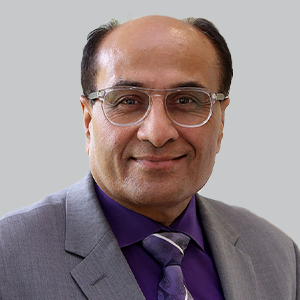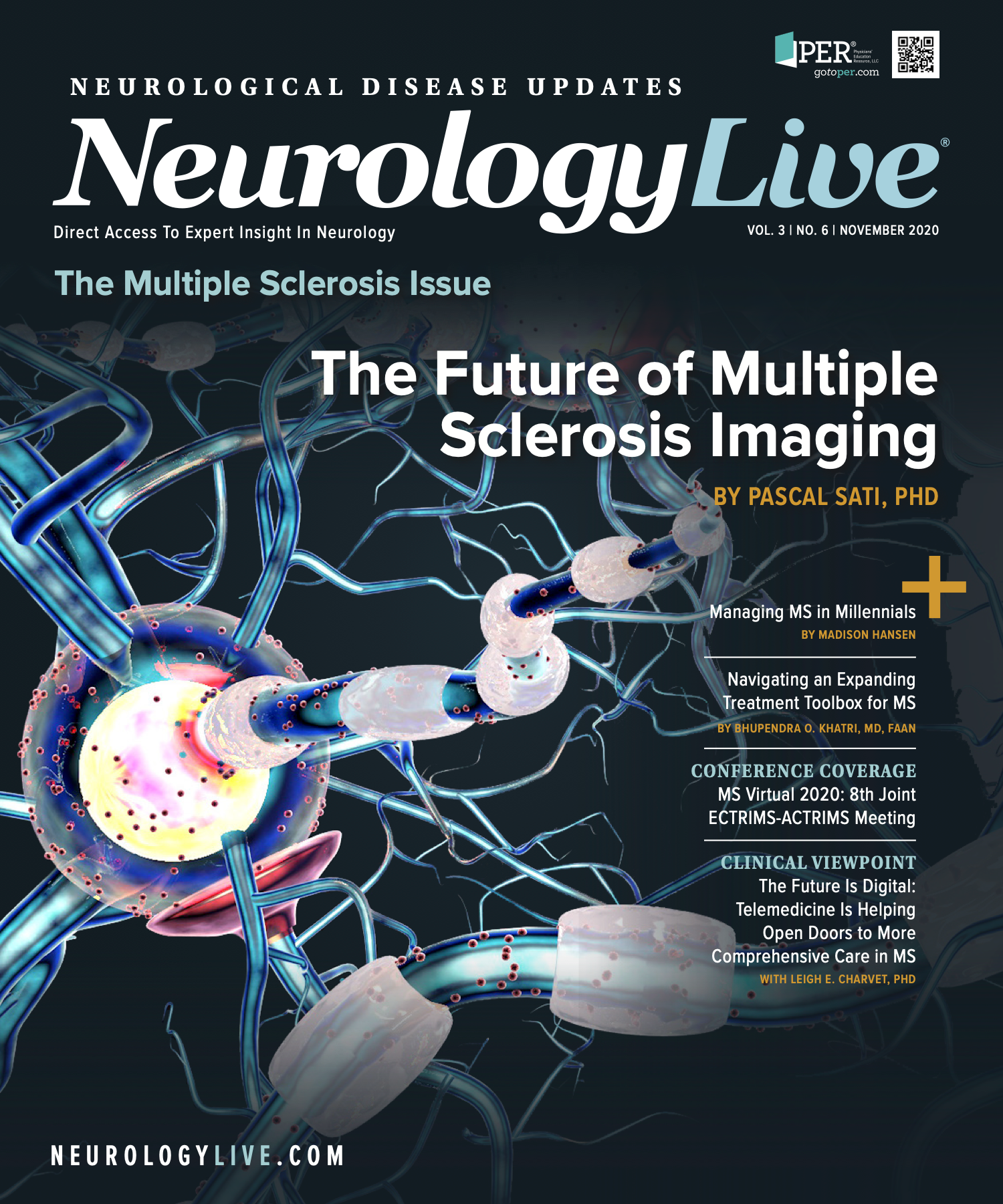Publication
Article
NeurologyLive
Navigating an Expanding Treatment Toolbox for MS
Author(s):
“Is more always better?”: The age-old question is more relevant than ever as clinicians and patients alike navigate an increasingly crowded MS treatment landscape.
Bhupendra O. Khatri, MD, FAAN

Ever since the approval of interferon beta-1b (Betaseron; Bayer) in 1993, there has been unprecedented growth in the number of disease-modifying therapies (DMTs) for multiple sclerosis (MS). We currently have 22 FDA-approved therapies with several more in the pipeline waiting to enter the market in the next few years. For a disease that has no known cause, no reliable biomarker to measure its activity, and no way of predicting which drug will work the best for a given patient, managing so many drugs for a single disease becomes a daunting task for both general neurologists and MS specialists.
The words of William Osler (1849-1919), the father of modern medicine and one of its greatest icons, have much wisdom: “A young physician starts life with 20 treatments for each disease, while the old physician ends life with 1 treatment for 20 diseases.” This is more relevant now than ever as we try to identify the most appropriate drug for each of our patients with MS, what and when to start, and when to switch. Our challenge is to balance the benefits against the potential adverse effects of high-efficacy drugs vs low- or moderate-efficacy drugs. Understanding the mechanism of action(s) of these drugs with their variable effects on the immune cells is crucial not only when initiating the drug therapy but also when switching the drug. The threshold for each has become quite low as we keep expanding the list of drugs from which to choose.
I cannot overstate the impact of these therapies on functional outcomes in patients with MS. I have been caring for patients with MS since before the first DMT was approved, and I can say with certainty that these drugs have made a huge difference in the way patients now lead their lives. I often tell my patients that MS is not what it used to be. They can now lead productive, healthy lives and achieve their goals. While it was not uncommon to see patients with MS in wheelchairs or using walkers before the first DMT was approved, now, I rarely see such patients. While there has not been a scientific study to prove this point, many senior MS experts I have spoken to agree that all the MS DMTs have improved patients’ quality of life.
WATCH NOW: Updates in the Management of Relapsing Multiple Sclerosis
For this to quality-of-life improvement to occur, however, physicians need to be proactive. We need to be guided by the patient’s prognostic criteria and then prescribe the most effective therapy as early as possible. Waiting until patients are clinically worse or their MRIs show increased disease burden may be too late. As such, physicians have an increased impetus to act swiftly in initiating a therapy as soon as the diagnosis is made to “save the brain.” Just as in stroke, time is of the essence in the management of MS. Inappropriate or delayed treatment can lead to irreparable harm. Some experts have posited, and I believe with some truth, that “in this day and age, if MS patients do not do well, it is more likely the fault of the treating physicians rather than of the disease’s progression.”
All of this places added stress on an already overworked physician. Physician burnout due to administrative overload is at record high. A recent study published in the Annals of Family Medicine1 showed that, for every hour physicians spend with a patient, they spend 2 hours doing administrative work, leaving little time for them to study the latest research updates. It is not unusual for physicians to return home from work late in the evening and spend the little time left in the day logging into the electronic health records system from home to complete clinic work that is still undone. There is hardly any time left to read journals—and even if they do have a little time, what would a general neurologist focus on? Research updates on Parkinson disease, stroke, epilepsy, MS, neuropathies, or headaches? A tremendous amount of progress has been made in all of these areas, as well as in many other diseases, but to grasp all of this information would require considerable time, which these physicians do not have.
Even though we currently have 22 approved therapies for MS, there are no textbooks, published guidelines, or algorithms for when a particular therapy for MS should be initiated or when to switch therapies. General neurologists who may not be well informed about newer drugs may resort to using more familiar drugs that have lower risk management strategies when a newer, more efficacious drug would have been preferable.
Multiple MS drugs means that each insurance company has its favorites based on rebates they receive from pharmaceutical companies, which may well dictate what physicians feel comfortable prescribing. Receiving a diagnosis is stressful in itself to a patient, but made even worse when they learn how much drug therapy may cost them. MS drugs are expensive, and their prices keep increasing each year, nearly tripling over the last 7 years.2 For example, when they were first approved in the 1990s, the cost of 1 year of therapy with interferon beta-1b, interferon beta-1a (Avonex; Biogen), and glatiramer acetate (Copaxone; Teva) ranged from $8000 to $11,000 per year; the same drugs now cost more than $75,000 per year, and the newer drugs cost even more.2
All of this puts an added strain on physicians who have to “fight” with insurance companies to get approval for a drug they feel is most appropriate for their patient. While the insurance company’s main objective is to make a profit, the physician is focused on healing the patient. Even 1 millimeter of damage in the brain can destroy 11,000 nerve fibers. A major relapse can easily destroy millions of nerve fibers, leading to a permanent disability.
When this is explained to newly diagnosed patients, they usually understand the rationale for an early and most-effective therapy, rather than taking a chance of finding out later the severity of their disease—whether it be a more mild or a disabling form. It is time-consuming and stressful for a busy physician to convey this concept over and over again to insurance companies in order to get approval for a given drug. Study results show, without any doubt, that the first 5 years of the disease set the tone for the future course the disease may take, so it makes sense to start therapy early, as soon as the diagnosis is made, if not sooner, as in the case of clinically isolated syndrome.
The financial burden of treating this disease is enormous. For a disease that affects about 2.5 million people worldwide, the global MS drug market was valued at $25 billion in 2019 ($14.74 billion of that in North America) and is projected to reach $40.66 billion by 2027.3 As the cost of these drugs continue to skyrocket, the FDA has shown leniency toward getting more generic drugs on the market. However, this has resulted in minimal effects on the prices of medications, which have continued to escalate at about the rate they had before.2
Higher prices translate to higher out-of-pocket costs for some patients, especially those with high-deductible health plans, resulting in high-priced therapies becoming inaccessible to some. Results of a recent National Multiple Sclerosis Society survey showed that 40% of respondents had “altered or stopped” DMTs for their MS due to high cost, and more than half were concerned about being able to continue to afford their medication in the coming years.4
Generic medicines tend to cost less than their brand-name counterparts because they do not have to repeat animal and clinical studies that were required of the brand-name medicines to demonstrate safety and effectiveness. However, does it always make sense to choose a generic over the brand-name drug? For biological and complex nonbiological medications, this would be difficult to prove without a controlled study. Success in the development of a generic drug depends on the maker’s ability to offer a similar, safe, and effective product at a cost saving. Introduction of a generic version of Copaxone, which is among the most frequently prescribed MS drugs, did very little to lower the cost of that medicine.2
An increase in the effective treatment armamentarium for MS is now capable of shutting down disease activity, but it has also propelled us to a threshold of a new frontier to conquer. For a disease that is highly heterogeneous and unpredictable, a personalized treatment is highly desirable. To provide better indicators for prognosis and treatment response, we need biomarkers that are readily available, reliable, and economical, and we need pharmacogenomics to help us navigate to the most appropriate therapy for a given patient. While the current DMTs prevent new lesion formation on MRI, they do not prevent delayed chronic neurodegeneration or bring about regeneration. Indeed, we may have reached a ceiling effect in our current class of drugs and will need to divert our efforts to repair and regeneration, which are the greatest unmet needs in MS therapy.
This is what I foresee as the next frontier to conquer in our fight against MS.
REFERENCES
1. Arndt BG, Beasley JW, Watkinson MD, et al. Tethered to the EHR: primary care physician workload assessment using EHR event log data and time-motion observations. Ann Fam Med. 2017;15(5):419-426. doi:10.1370/afm.2121
2. Hartung DM, Johnston KA, Geddes J, Bourdette DN. Effect of generic glatiramer acetate on spending and use of drugs for multiple sclerosis. Neurology. 2020;94(13):e1407-e1414. doi:10.1212/WNL.0000000000008936
3. Multiple sclerosis drugs market size, share & COVID-19 impact analysis, by drug class (immunomodulators, immunosuppressants, interferons, and others), by route of administration (oral and injection (intramuscular, subcutaneous, and intravenous) by distribution channel (hospital pharmacy, retail pharmacy, online pharmacy), and regional forecast, 2020-2027. Fortune Business Insights. Published July 2020. Accessed October 10, 2020. https://www.fortunebusinessinsights.com/industry-reports/multiple-sclerosis-drugs-market-100386
4. New survey shows 40% of people with MS alter or stop taking medications due to high cost. News release. National Multiple Sclerosis Society; January 13, 2020. Accessed October 10, 2020. https://www.nationalmssociety.org/About-the-Society/News/New-Survey-Shows-40-of-People-with-MS-Alter-or-Sto

2 Commerce Drive
Cranbury, NJ 08512
All rights reserved.




